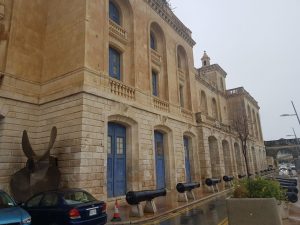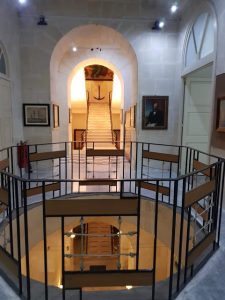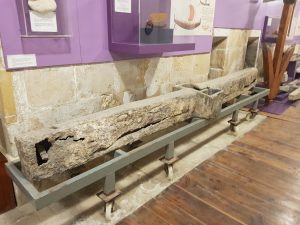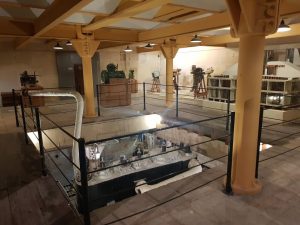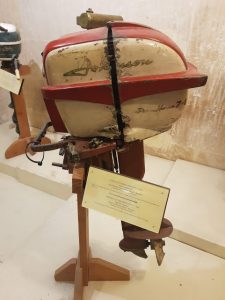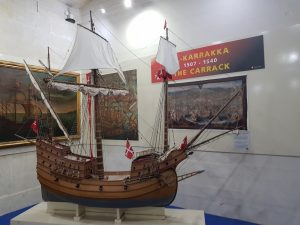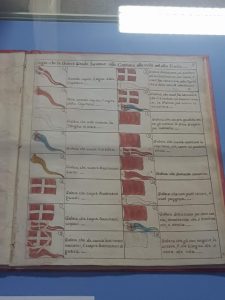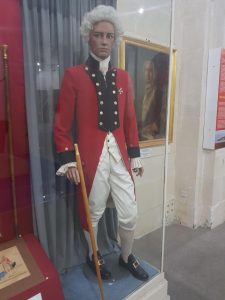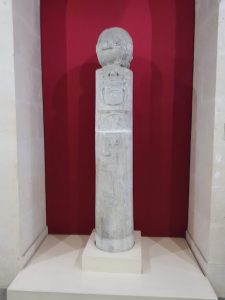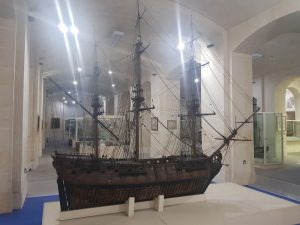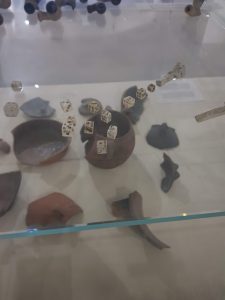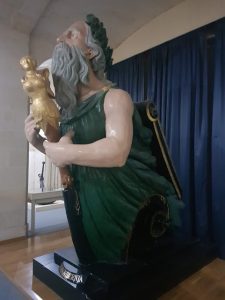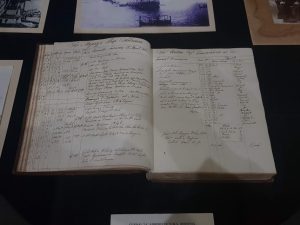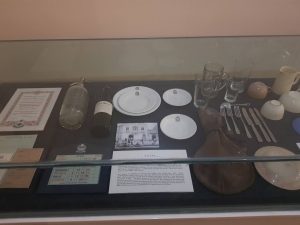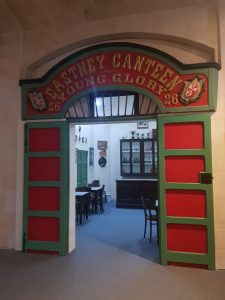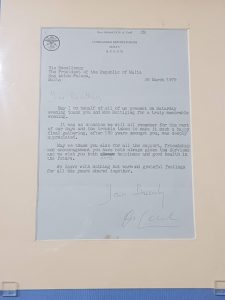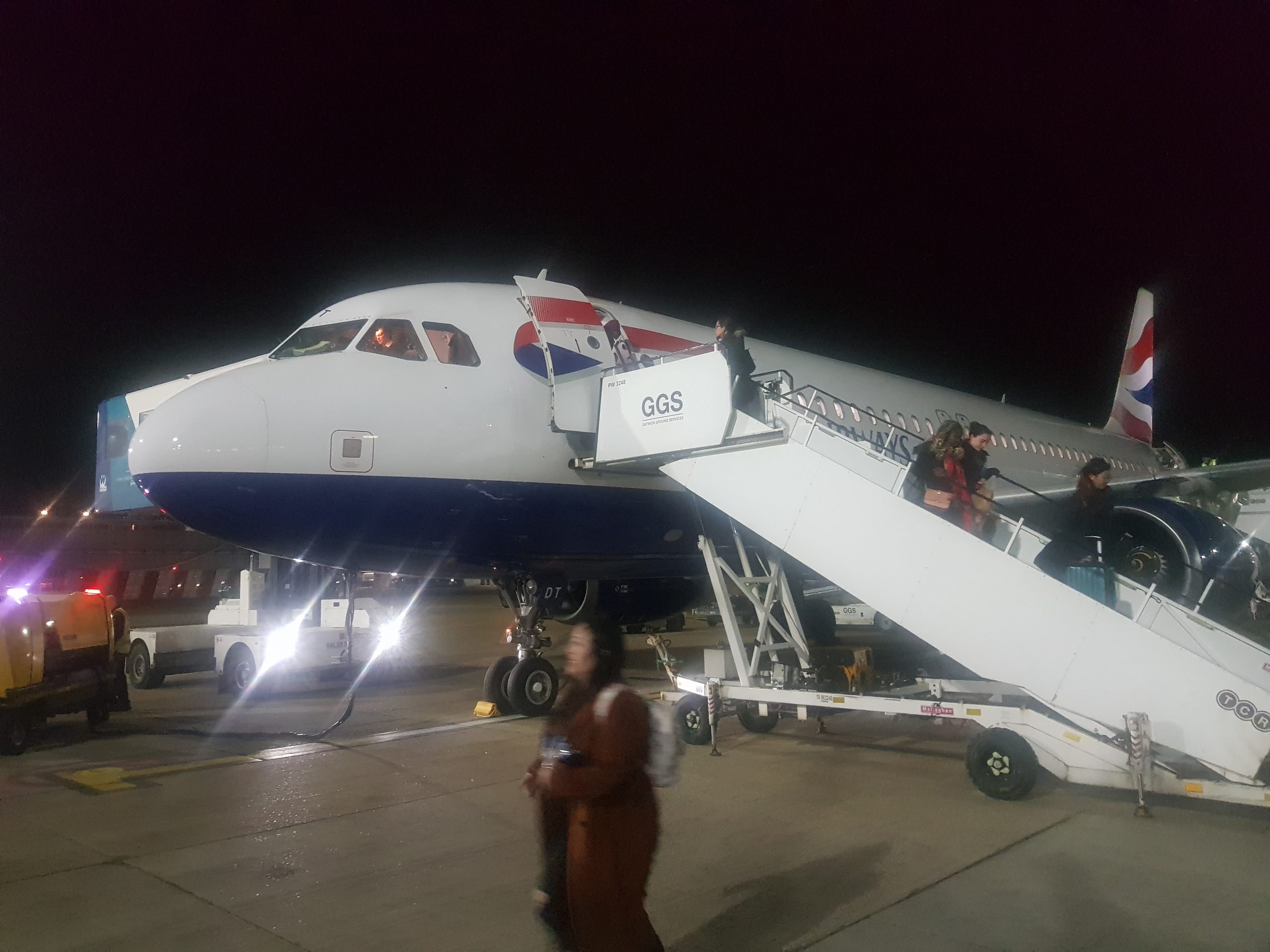Malta – South Eastern Region – Birgu – Malta Maritime Museum
Malta Maritime Museum is located in Birgu in a building which was formerly used by the Royal Naval Bakery. After the end of the Second World War the building was instead used by the Admiralty Constabulary and it remained empty after the British left in 1979. After some years when the building stated to deteriorate it was decided to turn it into the country’s first dedicated maritime museum.
Visitors enter on the ground floor and most of the displays are on the first floor. I decided to enter the museum by wandering by the ticket desk and finding myself in the exhibits area, before realising that I had probably better check with the ticket desk. This was excusable as there were some VIPs cluttering up the reception area, making it hard for me to ascertain what I was supposed to do. After I presented my Heritage Malta pass the staff member gave me a map of the site, which proved helpful in working out where I was supposed to go.
One of the first sights in the museum is this Roman anchor, with this being one of the largest which has been found.
In a slightly separate part of the building is some old machinery in quite a spacious display area. Indeed, the whole museum is spacious and they appear to have more space than they do exhibits at times. The building is probably too large for the museum as it currently stands, but they can always expand and keep building up the already substantial number of exhibits.
Some kind of motor thing for a boat.
The Knights of the Order of St. John, who ran the islands for centuries, had a strong navy. This is a model of one of their carracks, the Santa Maria, which was originally a Muslim ship which the Knights pinched. The Knights were very proud of their ship until a boy decided he’d play with gunpowder on its deck and managed to set the cannons off all by himself. In what could be considered as an unfortunate incident, the ship sank. It’s still there, at the bottom of Galley Creek.
This is quite special, it’s the instruction manual for signalling on ships owned by the Knights.
A replica of the naval uniform worn by a Captain fighting for the Knights.
The Amati Column, which was erected in 1651, formerly stood on the waterfront in Valletta, named after the Italian Knight who financed a shelter in the area.
There are some models of ships in the museum, this is one of the larger and more impressive ones. At this point I would comment on the lighting in the museum as it was nearly dark in some places, making reading the information boards difficult. They also decided that it would be useful to make the writing quite small, which added a game show element to proceedings, it became a little like a Krypton Factor test to try and see the text.
Sailors weren’t allowed to gamble on board boats, but they did anyway. These are dice which the sailors created from whittling away bone, with an uncompleted one on the right hand side.
This figurehead from HMS Hibernia was for a time located at the entrance to the nearby Fort St. Angelo and there is a sign there indicating where it used to be. When the British military left Malta they took this figurehead with them and between 1979 and 1994 it was displayed at the Royal Navy Museum in Portsmouth. When this maritime museum in Malta opened the British kindly sent it back again.
The log book from HMS Hibernia.
A collection of items from the NAAFI.
A recreation of what a Royal Navy bar would have looked like.
A letter from the Rear Admiral to the President of Malta following the departure of British troops.
Overall, I liked this museum as it was spacious and there was plenty to see. The lighting perhaps needs looking at in places and it was a shame that there weren’t many other visitors when I was there. It’s a comprehensive museum covering maritime history from the earliest days right through to the end of the twentieth century. It’s not as polished as some of the other newer Heritage Malta museums, but still worth visiting.

